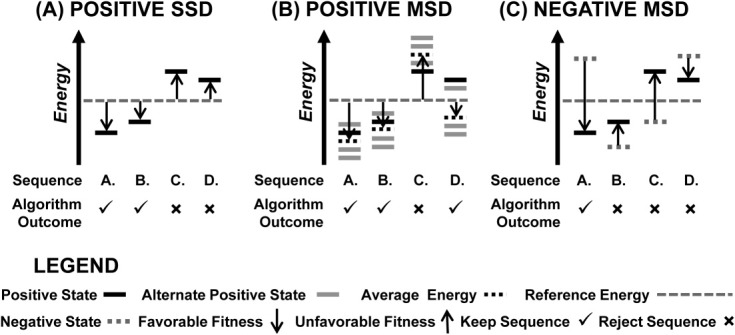Figure 2.

Sequence ranking and selection in single-state (SSD) and multistate (MSD) design. A: Positive SSD simulations rank a sequence using the energy from a single positive state. In this example, sequence A is kept and ranked as the best sequence because it has the largest favorable difference in energy between the single positive state and the reference energy. Sequence B is also kept although its difference in energy from the reference value ranks it lower than sequence A, while both sequences C and D are rejected as their difference in energy from the reference energy is positive and thus unfavorable. The ranking of kept sequences for this SSD example is A > B. B: Positive MSD simulations rank a sequence using the average energy over an ensemble of positive states and this average energy is used to rank the sequence relative to a reference energy. Here, sequences A and B are both kept as their average ensemble energy falls below the reference energy. Sequence C is rejected as it's ensemble average energy lies above the reference energy and sequence D is kept as its ensemble average energy is less than the reference energy, even though some of the states have an energy greater than the reference energy. The ranking of kept sequences for this MSD example is A > B > D. C: Negative MSD simulations rank a sequence by evaluating the difference in energy between the desired positive state and the competing negative state. Sequences favoring the negative state are ranked poorly. In this example, only sequence A is kept as it is the only sequence whose difference in energy between the positive and negative state is favorable and whose positive state energy falls below the reference energy. The remaining sequences (B, C and D) for this MSD example are rejected.
